Paul L. Richards, an experimental physicist who built some of the first highly sensitive detectors to probe the faint radiation left over from the birth of the universe, died peacefully at his home in Berkeley on Monday, Sept. 16. A professor emeritus of physics at the University of California, Berkeley, Richards was 90.
Richards got his start as a solid-state physicist, studying the properties of superconductors. But after the discovery of the cosmic microwave background (CMB) in 1965, he shifted to astrophysics and cosmology, employing instruments he had developed to measure the properties of very cold materials to also measure cold radiation from space. He built the first of these instruments — a Fabry Perot spectrometer — in the early 1970s with graduate student John Mather and postdoctoral fellow Michael Werner, who took it to a high peak in the White Mountains of California to measure the temperature of the radiation. Werner went on to the Jet Propulsion Laboratory in Pasadena to lead the Spitzer Space Telescope as project scientist.
Richards’ second CMB instrument was much more powerful — a balloon-borne Fourier transform spectrometer that he built with Mather and graduate students David P. Woody and Norm Nishioka. They realized that only by getting the instrument above the atmosphere and cooling it with liquid helium would they be able to make truly precise measurements of the spectrum of the CMB. At the time, that meant balloon experiments from a launch site in Palestine, Texas. These and experiments by others provided strong support for the theory that the universe began with a Big Bang 13.6 billion years ago, with the cosmic background radiation the cool remnant of that very hot birth.
The details of the microwave background were so important to scientists because they provided “the initial conditions for astronomy” that grew into the galaxies, clusters of galaxies and large cosmic structures we see today, Richards told Science magazine in 1994. “If you want to know why there are big superclusters, why a great wall, why the deep surveys show these gigantic structures,” the answer lies in the details of the background radiation.
Mather later employed similar instruments aboard a satellite, the Cosmic Background Explorer (COBE). In 1992, COBE succeeded in detecting minute variations in the temperature across the sky, a finding Stephen Hawking called the greatest scientific discovery of the century. Mather and George Smoot, then at Lawrence Berkeley National Laboratory and now a UC Berkeley professor emeritus of physics, won the 2006 Nobel Prize in Physics “for their discovery of the blackbody form and anisotropy of the cosmic microwave background radiation.”
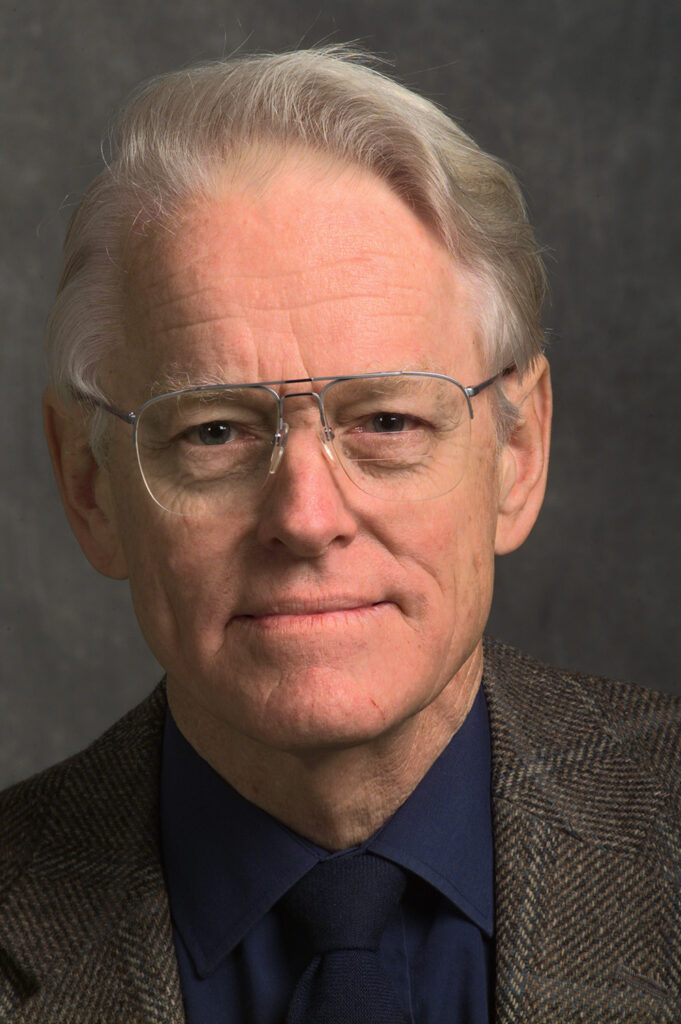
UC Berk
“Paul was my thesis adviser on the balloon project, which actually didn’t work right the first time, but became the idea for the Cosmic Background Explorer and my career at NASA,” said Mather, who after COBE took a position as senior project scientist for another highly successful project, the James Webb Space Telescope. “He was a brilliant mentor, a model human being and a great scientist. Paul’s a hero, and his ideas have grown immensely. The COBE mission came directly from his inspiration.”
While COBE was under development, Richards began developing his own set of balloon experiments to probe the CMB’s spatial variation, or anistropy. The Millimeter Anistropy eXperiment (MAX) was the first of those, followed by MAXIMA (Millimeter Anisotropy eXperiment IMaging Array). They detected patterns in the cosmic microwave background (CMB), supporting the idea of inflation in the early universe and proving that the universe is flat, not curved. The results, announced in 2000, confirmed the findings of a competing experiment, BOOMERanG (Balloon Observations Of Millimetric Extragalactic Radiation and Geophysics), co-led by one of Richards’ former students, the late Andrew Lange, which were announced a month earlier. Together, MAXIMA and BOOMERanG provided convincing evidence that the reigning theories of cosmic birth and evolution were correct.
“A subset of cosmological theories, those involving inflation, dark matter and a cosmological constant, fit our data extremely well,” Richards said at the time. “This is a good confirmation of the standard cosmology, and a large triumph for science, because we are talking about predictions made well before the experiment, about something as hard to know as the very early universe.”
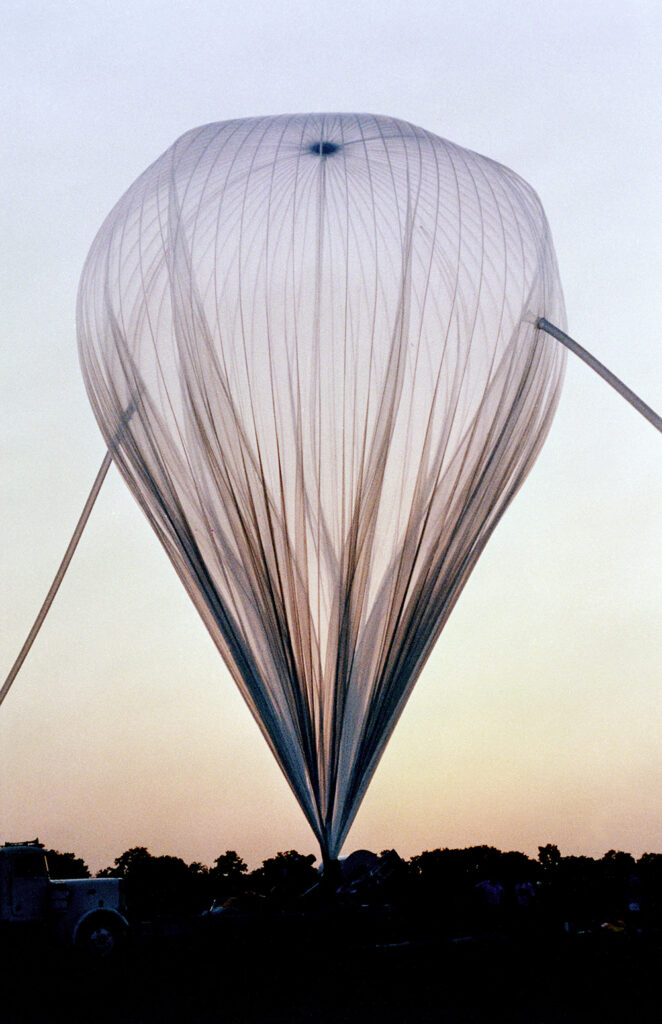
Courtesy of Lawrence Berkeley National Laboratory
MAXIMA used highly sensitive helium-cooled detectors, called bolometers, to measure minuscule fluctuations in the background radiation left over from the Big Bang.
Richards also pioneered detectors based on superconducting sensors and instrumented with superconducting quantum interference devices (SQUIDs), which were used on an experiment called POLARBEAR in the early 2010s to measure the polarization of the CMB. Variations on these detectors are still used today for even more detailed measurements of the CMB, such as those by the South Pole Telescope.
“He needed very sensitive detectors, and of increasingly high frequency, and I eagerly took that on and helped him with these devices,” said John Clarke, one of the pioneers of SQUIDS as detectors and a UC Berkeley professor emeritus of physics. “People in my group built the devices for him. I was always very interested in making the SQUIDS go to ever higher frequencies, and the reason I did that was largely driven by what Paul needed. Our long-running collaboration ultimately resulted in 22 joint publications.”
“That was really a theme in Paul’s career, that he would develop the really difficult, innovative technologies and then go out and measure something very important with them,” said Adrian Lee, a UC Berkeley professor of physics and Richards’ former postdoctoral fellow who later became his collaborator and now leads a group exploring the polarization of the CMB radiation. “Bringing that blockbuster technology forward was a big part of his career.”
A makerspace in the UC Berkeley physics department is being dedicated to Richards in recognition of his belief that building equipment is an important part of learning. Funded in part by a donation from Richards’ family, the Paul L. Richards Innovation Lab will provide valuable hands-on experience with equipment and projects that students are likely to encounter in their scientific career.
From solid-state physics to astrophysics
Richards was first introduced to infrared spectroscopy as a UC Berkeley graduate student in the late 1950s and eventually began building state-of-the-art detectors for far infrared wavelengths — a relatively unexplored region of the spectrum — to study new materials. With detectors he built as a member of the UC Berkeley physics faculty a decade later, he was able to detect a central feature of superconductors — the energy gap — that determines the temperature at which a material becomes superconducting.
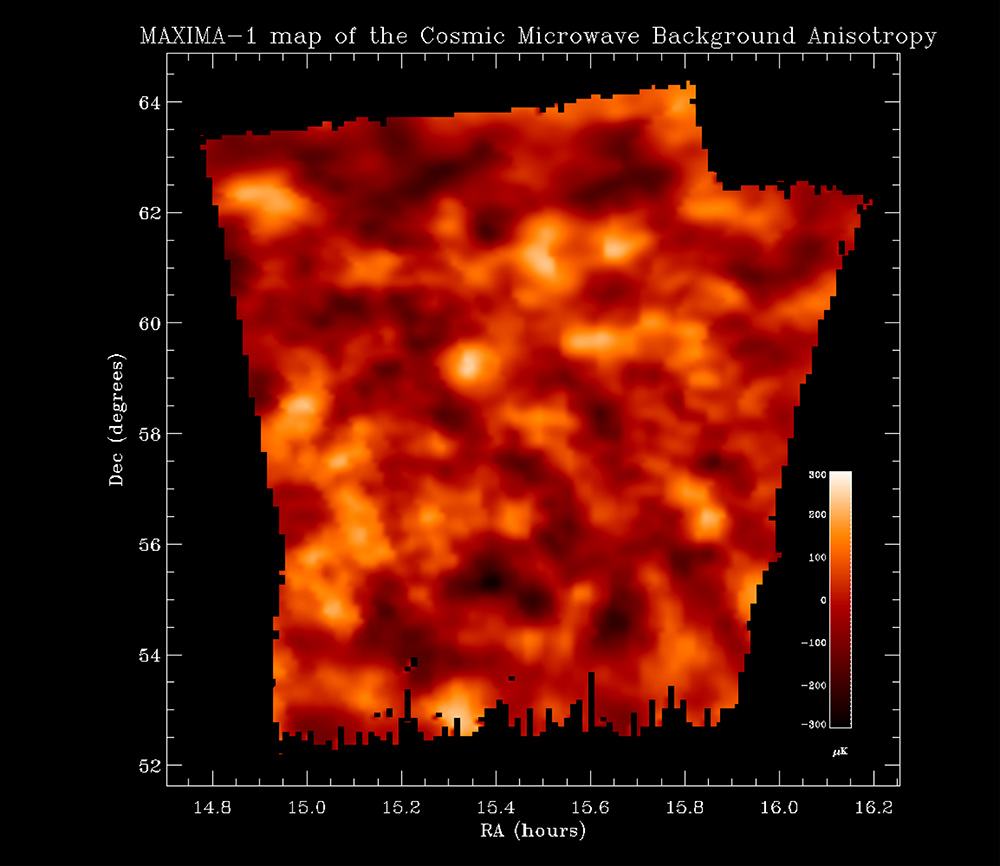
Marilee B. Bailey, Lawrence Berkeley National Laboratory
In the 1970s, one of his physics colleagues, Charles Townes — the Nobel Prize-winning inventor of the laser who had moved into the field of astrophysics — suggested that these detectors might be used to measure the frequency spectrum of radiation left over from the Big Bang. Though measured in the microwave range in 1965, the radiation had not been measured in the infrared, primarily because infrared detectors at the time were primitive and measuring such radiation was difficult because most of it is blocked by Earth’s atmosphere.
Richards took Townes up on his proposal and built and flew the first helium-cooled infrared spectrometer on balloons, to get above the atmosphere, in the mid-’70s. That and later balloon experiments helped prove the blackbody nature of the CMB, that is, its emission spectrum matched that of an object in thermal equilibrium.
MAXIMA and Boomerang subsequently explored the spatial fluctuations at different scales and by 2000 had data from which other features of the universe could be deduced, including its curvature, its age and the proportions of normal matter (5%), dark matter (27%) and dark energy (68%).
“People like to say that the cosmic microwave background is the Rosetta Stone of cosmology,” Lee said. “That’s a bit hyperbolic, but it’s actually true. We really are learning all these things about the universe from the cosmic microwave background.”
Lee eventually took over leadership of the research group and initiated the POLARBEAR experiment, with Richards as a collaborator. Lee currently leads a successor experiment, the Simons Array, based at the James Ax Observatory at 17,000 feet altitude in Chile.
Paul Linford Richards was born June 4, 1934, in Ithaca, New York, and eventually moved with his family to Riverside, California, where he attended Riverside Polytechnic High School. He enrolled at Harvard University in 1952, where he graduated summa cum laude with a degree in solid state physics in 1956. He earned his Ph.D. in physics from UC Berkeley in 1960, then took a postdoctoral year at Cambridge University in the United Kingdom.
Richards subsequently worked for six years at Bell Telephone Laboratories in Murray Hill, New Jersey, conducting work in solid-state physics. He returned to UC Berkeley in 1966 as a member of the physics faculty. He retired as a professor emeritus in 2005.
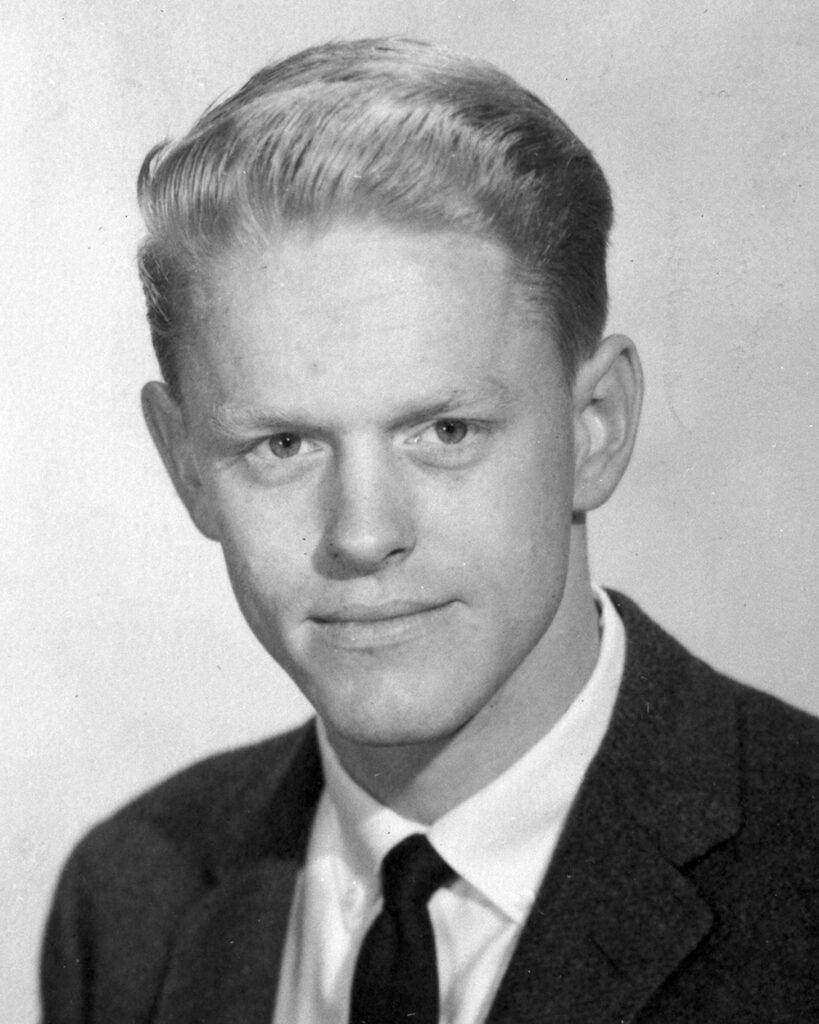
Marilee B. Bailey, courtesy of Lawrence Berkeley National Laboratory
Marvin Cohen, UC Berkeley professor emeritus of physics, met Richards when Cohen was a postdoctoral researcher at Bell Laboratories. He had known about Richards’ graduate work at UC Berkeley on superconductivity and quizzed him about it when they met.
“I still remember how impressed I was by his high standards and the way he was able to make me, a theorist, understand the details of his experiment,” Cohen said.
After Cohen joined the UC Berkeley physics faculty in 1964, he worked hard to recruit Richards to the department. Richards accepted the faculty position, but to Cohen’s dismay, changed fields to pursue research in astrophysics and cosmology.
“It was astonishing to watch Paul quickly move from the cutting edge of one research area to that of another,” Cohen said. “His accomplishments and those of his group of exceptional students and postdocs had an enormous impact, especially in the field of cosmology.”
Clarke first met Richards at Cambridge University in 1967, when Clarke was finishing his graduate studies and Richards was a new assistant professor at UC Berkeley. Clarke was impressed with Richards, both personally and for his scientific knowledge, and asked to come to UC Berkeley to be Richards’ postdoctoral fellow. Unfortunately, Richards didn’t have funding for a second postdoc, but a new faculty member, Gene Rochlin, was looking for one and was glad to take Clarke on.
“From a practical point of view, Paul was unquestionably my mentor,” Clarke said. “I came to Berkeley because of Paul Richards. He taught me an enormous amount about experimental physics and became a close friend and long-term collaborator. His impact on my life and my scientific career were enormous.”
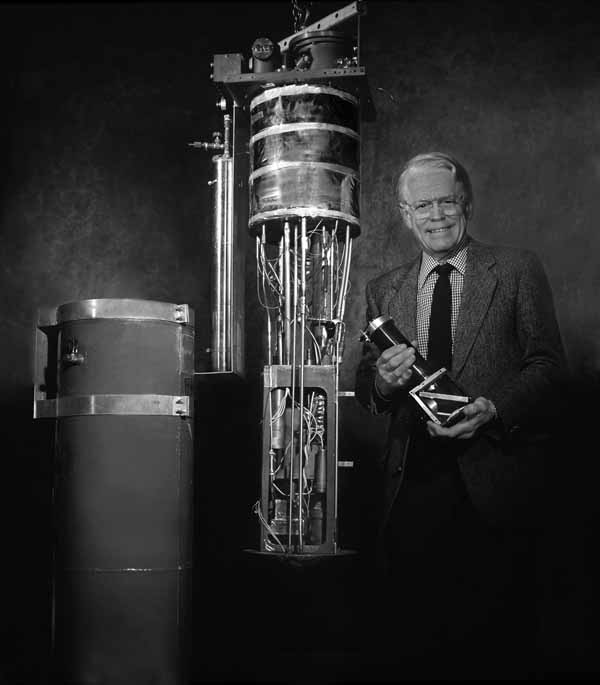
Courtesy of the Smithsonian Institution.
Richards was a member of the National Academy of Sciences and the American Academy of Arts and Sciences. He received the Button Prize of the Institute of Physics (U.K.) for Outstanding Contributions to the Science of the Electromagnetic Spectrum in 1997, the Frank Isakson Prize of the American Physical Society for Optical Effects in Solids in 2000, the Dan David Prize for Cosmology in 2009, the 2011 Medal of the Schola Physica Romana and the Tomassoni Prize of the University of Rome for Cosmology, and the Cocconi Prize of the European Physical Society for Particle Astrophysics in 2011. He also was named California Scientist of the Year in 1981. He received fellowships from the Alexander von Humboldt Foundation, the J.S. Guggenheim Memorial Foundation, and — three times — from the Adolph C. and Mary Sprague Miller Institute for Basic Research in Science.
Richards has published more than 300 papers on infrared and millimeter wave physics, including the development of measurement techniques, especially new detectors, and the application of these techniques to many physical problems. He is survived by Audrey Jarratt Richards, his wife of 59 years; their two daughters, Elizabeth Brashers of Oakland and MaryAnn Pearson of Berkeley; a sister, Mary Luch of Baltimore, Maryland; and two grandchildren.


2 Comments
https://shorturl.fm/Ww5az
https://shorturl.fm/z8mXk